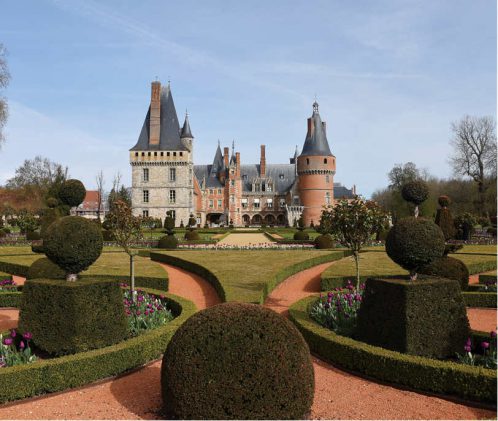By Plinio Corrêa de Oliveira *
What is culture? The question has received a variety of responses, some inspired in the study of literature, others in philosophic or social systems of every kind. So complicated are the contradictions surrounding this term and another related to it—civilization—that international congresses of professors and other learned men have met especially to define them. As usually happens, much discussion shed little light on the subject.
It is impossible in the space we have here to mention all the theses and arguments of the various currents, to affirm and justify our own thesis, and afterwards to treat of Catholic culture. We can, however, seriously consider the subject, taking the term culture in the thousand modes in which it has been clothed by the language of so many peoples, social classes, and schools of thought. We begin by showing that in all of them, “culture” contains an invariable basic element, the refinement of the human spirit.
At the heart of the notion of refinement is the idea that every man has in his spirit qualities susceptible of development and defects that can be restrained. Refinement, then, has two aspects: one positive, signifying the growth of what is good, and the other negative, the removal of what is bad.
Many current ways of thinking and feeling about culture are explained in light of this principle. Thus, we do not hesitate to recognize as cultural a university, a school of music or acting, or even a chess club. These entities or social groups directly seek the refinement of the spirit, or at least pursue ends that in themselves refine the spirit.
We also recognize that a university or any other cultural institution may work against culture, however, as happens when, because of errors of any kind, its action deforms the spirit. One could affirm this, for example, about certain schools that impress upon their students disdain for everything philosophical or artistic. A person whose state of spirit moves him to adore technology as the value supreme and the only foundation of the soul, to deny every certainty not derived from laboratory experiment, and to scornfully reject everything beautiful is, without a doubt, suffering from a deformation of spirit. Deformed also would be the spirit that, moved by an inordinate philosophical appetite, were to deny any worth to art, poetry, or even more modest activities that also require intelligence and culture, such as technology. We would say that universities which form their students according to some of these false orientations exercise an anti-cultural action or propagate a false culture.

Despite the mechanization of war, American soldiers were still being instructed in fencing. Each Army troopers was issued a saber before the First World War, until its subsequent withdraw as a modern weapon in the interwar year of 1934.
In this current sense, fencing is recognized as an exercise of a certain cultural value, for it supposes physical dexterity, vivacity of soul, and elegance. But it would be contrary to common sense to attribute any cultural value to boxing, which, aiming heavy and brutal blows at the very face of a man, is inherently degrading to the spirit.
Culture and instruction
At first sight and in the general understanding, the distinction between instruction and culture is less clear. But, things being well analyzed, one sees that such a distinction exists and rests upon a solid foundation.
 A person who reads a great deal is generally considered very cultured, at least as compared with another who reads little. And, between two who read a lot, the one who reads more will be seen as the more cultured. As instruction in itself refines the spirit, it is natural that, all else being equal, one who is better-read is considered more cultured. The danger of error in this proposition arises from the fact that many people inadvertently simplify notions and end up considering culture a mere consequence of the number of books read. It is a flagrant error, for reading is advantageous not so much in the quantity as in the quality of the books read, and principally in function of the quality of the one who reads and the reason for which he reads.
A person who reads a great deal is generally considered very cultured, at least as compared with another who reads little. And, between two who read a lot, the one who reads more will be seen as the more cultured. As instruction in itself refines the spirit, it is natural that, all else being equal, one who is better-read is considered more cultured. The danger of error in this proposition arises from the fact that many people inadvertently simplify notions and end up considering culture a mere consequence of the number of books read. It is a flagrant error, for reading is advantageous not so much in the quantity as in the quality of the books read, and principally in function of the quality of the one who reads and the reason for which he reads.
That is, reading, in thesis, instructs—in the sense of merely providing information. But a person well-read and instructed, or as it may be, a person informed of many facts or notions of scientific, historical, or artistic interest, may well be less cultured than another with a lesser store of knowledge.
 Instruction only fully refines the spirit when followed by profound assimilation resulting from sound reflection. And for this reason, he who has read little but assimilated much is more cultured than he who has read much but assimilated little. For example, a museum guide is usually quite informed about the exhibits he shows visitors, but, not infrequently, he is little cultured. He limits himself to memorization and looks not to assimilation.
Instruction only fully refines the spirit when followed by profound assimilation resulting from sound reflection. And for this reason, he who has read little but assimilated much is more cultured than he who has read much but assimilated little. For example, a museum guide is usually quite informed about the exhibits he shows visitors, but, not infrequently, he is little cultured. He limits himself to memorization and looks not to assimilation.
To be continued…
(*) Lecture on November 13, 1954 at the Central Seminary S. Leopoldo (Rio Grande do Sul, Brazil), at the invitation of Fr. Fritzen Leonardo, SJ, Rector of that House, and Published in Catolicismo, n. 51, march 1955.
CRUSADE Magazine, July/August 2001, p. 23-27; also taken from Crusade Magazine May/June 1996, p. 4-6.








